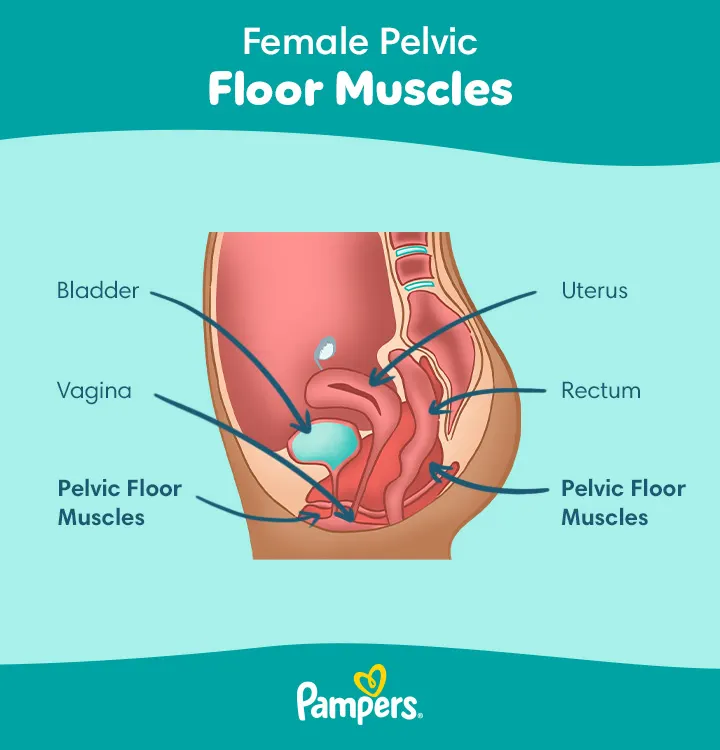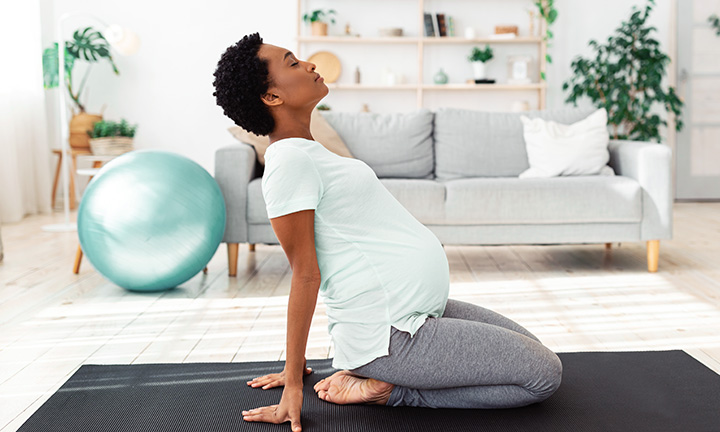You may have heard of pelvic floor exercises, otherwise known as Kegel exercises after the American gynaecologist who invented them, but do you know how important they can be during pregnancy? These invisible exercises strengthen the pelvic floor muscles that help support your bladder, uterus and rectum, and they are great to do both during and after pregnancy. Read on to learn about the benefits of pelvic floor exercises and how you can add them to your daily routine.
What Are Pelvic Floor Exercises?
Pelvic floor exercises involve squeezing and relaxing muscles in the pelvic and genital areas. These muscles support the pelvic organs, including the bladder, uterus and rectum. Doing pelvic floor exercises regularly during pregnancy can help you improve and maintain your bladder and bowel control by increasing the strength, endurance and correct function of these important muscles. As your baby grows, especially during your third trimester, more and more pressure will be put on your pelvic floor muscles, so the earlier you start, the better. The NHS recommends to start pelvic floor exercises as soon as you find out you’re pregnant. Kegels can also be a great part of post pregnancy workouts, as well as throughout life, helping to stop incontinence, treat prolapse and even make sex better.
The good news is that you don’t need to join a gym to train these muscles. Pelvic floor exercises can be done discreetly as a part of your daily routine.
Benefits of Pelvic Floor Exercises for Women
The benefits of doing Kegel exercises, especially during pregnancy, include:
Improved bladder control. Many women experience leaking urine during pregnancy or after giving birth. These exercises can help prevent or treat conditions like urinary incontinence, which is when you feel the strong urge to pee and pass urine before you can get to the bathroom, or stress incontinence, which involves leaking a few drops of urine when you cough, laugh or sneeze.
Strengthening pelvic organ support. During pregnancy and childbirth, the muscles of your pelvic floor come under a lot of strain. With weak pelvic floor muscles, there is a chance of pelvic organ prolapse − where organs in the pelvis bulge into the vagina, causing discomfort and pain. Pregnancy and childbirth, especially long, difficult births or multiple babies, can increase the chance of this condition. Your doctor may recommend pelvic floor exercises, along with other potential lifestyle changes or treatments.
Reduced risk of bowel incontinence. This is a condition that causes you to leak stool before you make it to the bathroom. Pelvic floor exercises can help strengthen the rectal muscles to help prevent this.
How to Do Pelvic Floor Exercises
Pelvic floor exercises are easy to do. It’s all about squeezing and relaxing the same muscles you would use to stop a stream of urine or hold back wind. Here’s how to do pelvic floor exercises:
Find the right muscles. Imagine you are trying to stop yourself from passing wind or hold the flow of urine. You should feel something like a muscle lifting upwards. Those are the muscles you need to be exercising. If you’re still unsure, your doctor can help you locate the right muscles.
Get comfortable. Choose whichever position you feel most comfortable in, whether that’s lying down, sitting or something else.
Squeeze the pelvic floor muscles, relax, and repeat. You want to squeeze those muscles as if you’re lifting them as high as they can go. Then do one of the following:
Long hold. Squeeze your pelvic floor muscles and hold for as long as you can. Aim for 10 seconds, but if you cannot hold it that long at first, don’t worry, just hold it for as long as you can. Then relax for a few seconds and repeat. Initially, you may only be able to hold for one or two seconds, but over a few weeks, you’ll gradually be able to increase the hold time by a second or two. This works on the slow muscle fibres that help support your organs and work against gravity.
Contract and release. Quickly contract the muscles for a very short 1 second burst, then wait 5 seconds and repeat, several times. This helps to strengthen the fast muscle fibres that need to react to sudden stresses.
Increase the intensity as your muscles get stronger. It’s best to start small and gradually increase the number of repetitions, the duration of each squeeze and the frequency of daily practice sessions as the muscles get stronger. Read more about when and how often to do pelvic floor exercises in the next section.
As with all types of exercise, you will need to keep doing these exercises and do them correctly to see the best results.
When to Do Pelvic Floor Exercises and How Often
The NHS recommends to start pelvic floor exercises as soon as you find out you’re pregnant. After your baby is born, ask your doctor about starting to do Kegels again, along with walking and gentle stretches These can help with your recovery from childbirth. If you had a caesarean section, your recovery time will be longer. Talk to your doctor or midwife to get the all clear.
There is no set rule on how often to do pelvic floor exercises. However, you should aim to do them several times a day. It’s a good idea to do these exercises every day and experts typically recommend doing up to 40 sets of the above exercises a day for a strong pelvic floor during pregnancy.
Tips for Doing Pelvic Floor Exercises
To get the most out of doing your Kegels, keep these tips in mind:
Don’t do Kegels while peeing, as this may prevent your bladder from fully emptying.
Don't strain or hold your breath, and keep your abdominal, buttock, and thigh muscles relaxed.
Don’t overdo it. After starting to do these exercises, it can be normal to feel some soreness around the pelvic area, but if you feel pain, stop and talk to your doctor.
Doing these exercises regularly is important. If you find yourself forgetting, there are apps you can download that remind you to do your exercises and guide you through different training sessions.
By associating the exercises with something you do regularly, like sitting down to eat or washing your hands after going to the toilet, it becomes easier to remember to do them.
Pelvic floor exercises are your little secret ⎯ no one will ever know when you’re working hard. But it can also be great for your overall physical and mental health to do other forms of pregnancy exercise like prenatal yoga. Anything you do to keep moving and stay fit will help you prepare for motherhood.








